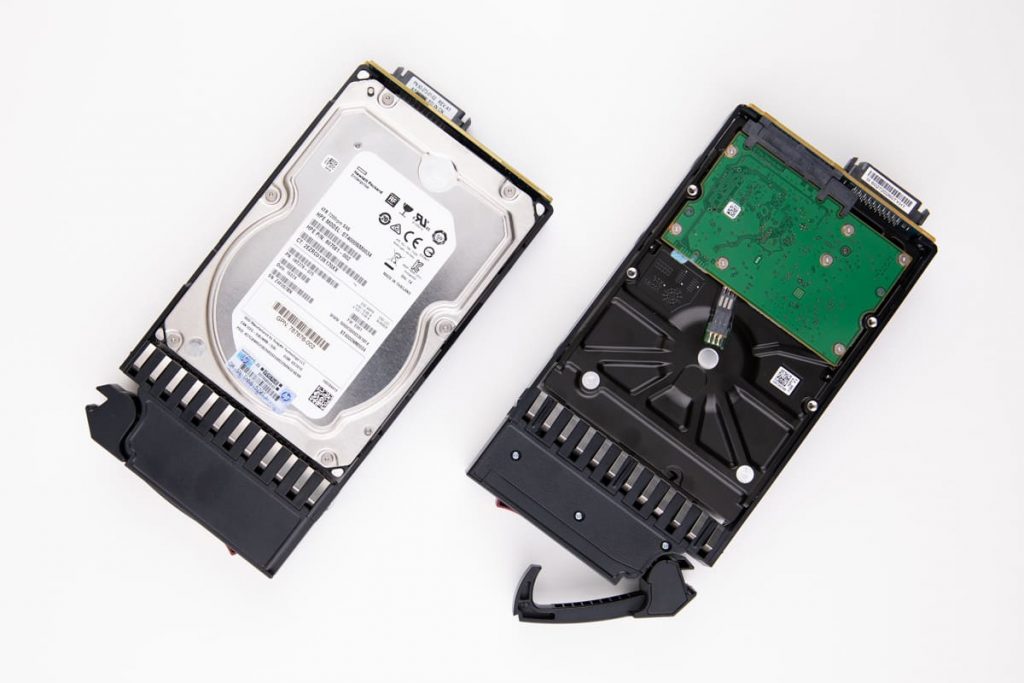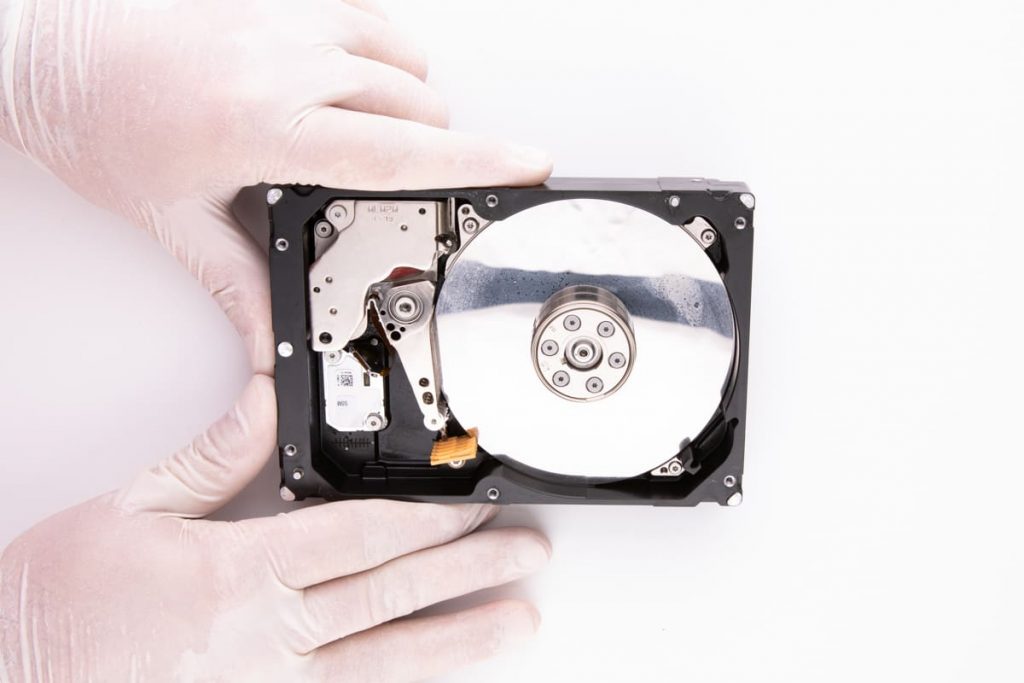The main purpose of Redundant Arrays of Independent Disks is to store files on a combination of hard drives. In a company, it might be documents and their backups; at home, it might be movies, photos, app distributions, and other valuable files.
The main goal when configuring a RAID on several disks is to improve the convenience of storing and working with data. The volume on local hard drives will be significant if the total amount of data is large enough. The files will be held on a single storage unit rather than on different hard drives separately.
For high-load operations where fault tolerance is critical, software RAID cannot correctly operate, so hardware RAID with an array controller is required. The more hard disks are installed, the faster the redundant array will be.
RAID Array Water Damage
If the volume is low, you can use two or more HDDs in RAID 0. Depending on the load on the disks, RAID configurations 5 or 1 can be used to boost fault tolerance.
Water damage causes severe problems to computer systems and can cause significant data loss. Modern media storage is very sensitive to moisture and contamination. Water flooding collapses both the mechanical and electronic components of hard drives and other storage devices. A large number of electronic components are exposed to destruction and corrosion within a few days.
Damage is most severe if water enters the sealed compartment that protects the magnetic head drive, platters, and other susceptible components. It is beneficial to work in specialized facilities to restore devices in such situations safely.
Therefore, to have the highest chances of recovering information, we recommend that you urgently contact the services of professionals as soon as you can access a water-damaged hard drive. In our data recovery laboratory, you can get certified assistance in recovering data from a disk that has been exposed to moisture. PITS Global Data Recovery Services provides professional data retrieval solutions even for severely damaged media storage.

Our skilled data recovery engineers will safely restore your vital files and confidentially transfer them to you. Working in an ISO Certified Class 10 Cleanroom, our experts ensure that even the smallest dust particles will not damage sensitive parts of the data storage devices.
Water Damaged RAID Array Recovery
Recently, we received a RAID 0 array consisting of 2 hard disk drives for data recovery. The customer said he spilled water on the hard drives, and the array stopped showing up in the operating system. As the RAID 0 is based on disk mirroring, his backups became inaccessible.
Water drive failures can cause immediate damage to the hard drive, and noticeable corrosion can occur within a few hours. Successful data recovery mainly depends on the actions taken immediately after the damage. The hard drive must be wrapped in an antistatic bag before being sent to the data recovery lab.
The client contacted our customer service, and after consulting with them, he decided to proceed with an emergency data recovery. This option is for clients who need to access their vital documents as soon as possible, and it takes 8-48 hours.
Our data recovery technician received the drive and started diagnostics right away. To avoid serious damage to the plates, the engineer removed the device from the water and wiped it with a lint-free towel. In order not to damage the hard drive by static electricity, he had to grind it.
Redundant Array of Independent Disks Restoration
The drive can never be dried the device with heat, compressed air, or electrical appliances. High heat can damage the electronics board, which is especially sensitive to water. The water was dried from the magnetic platters, and the data recovery expert started to extract data to assemble the RAID array further. He successfully accessed the data and transferred them to a new hard disk drive.

By emulating the work of the RAID controller, the engineer assembled the array and accessed the files. However, he noticed that all drives were corrupted and seen as RAW files. He had to decrypt them and restore the files and files system to their initial NTFS format.
RAW is a file system not recognized by OS drivers. This format makes it impossible to perform any operations with partition file reading, and error checking and defragmentation are not available.
Using our cutting-edge file decryption key codes, the technician restored the file system and accessed the files. The customer reviewed the results and approved them via remote file verification. His data was sent back to him, and the case was successfully finished.
Contact PITS Global Data Recovery Services at (888) 611-0737, or submit your case by filling out the form.
Frequently Asked Questions
What should I do first if my RAID array is water-damaged?
To prevent further damage, power off the RAID array immediately. Please do not attempt to turn it on or dry it using home appliances like hair dryers. Instead, quickly seek assistance from professional data recovery services.
Can I dry the RAID array myself to recover the data?
It is not recommended to attempt drying the RAID array yourself. Opening the device or using improper drying methods could exacerbate the damage. Professional data recovery experts can skillfully manage water-damaged electronic devices with their tools and expertise.
Are there any DIY methods for recovering data from a water-damaged RAID array?
DIY recovery is generally discouraged for water-damaged RAID arrays. The complexity of RAID configurations and the risk of further damage make it essential to rely on professional services that specialize in data recovery from such devices.
What are the chances of successfully recovering data from a water-damaged RAID array?
Data recovery success depends on factors like the severity of water damage, device shutdown speed, and RAID configuration type. Professional data recovery services often have high success rates, but no recovery can be guaranteed.
How long does the data recovery process take?
Recovery duration varies based on damage severity and RAID array complexity. It can take professionals several days to a few weeks to assess, clean, repair, and extract data from the affected drives.
